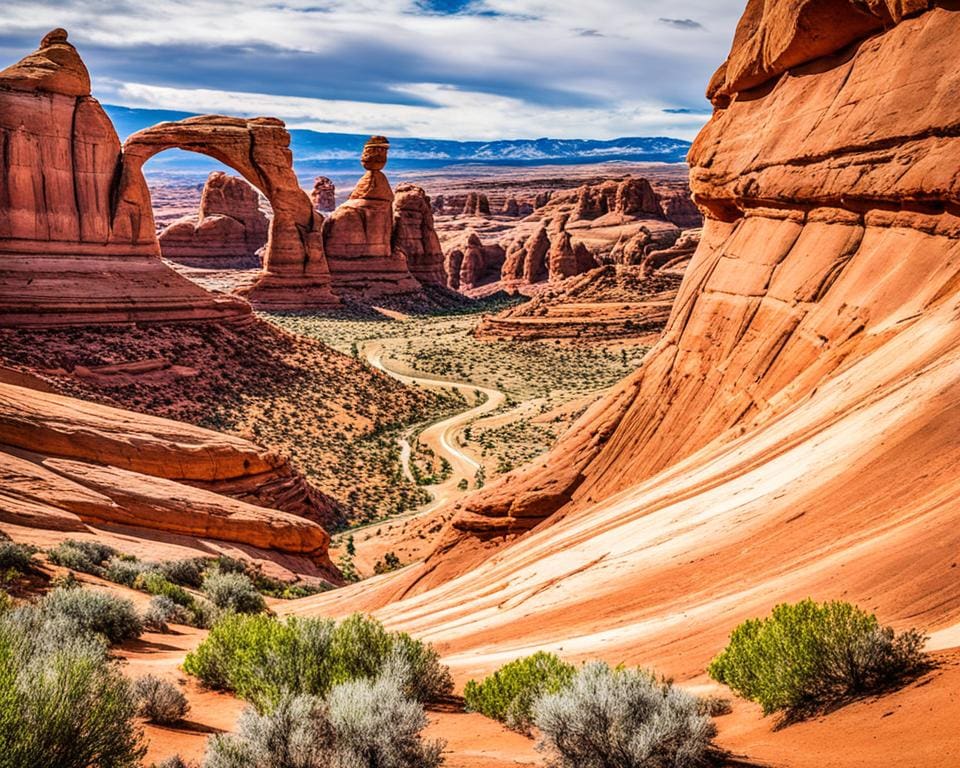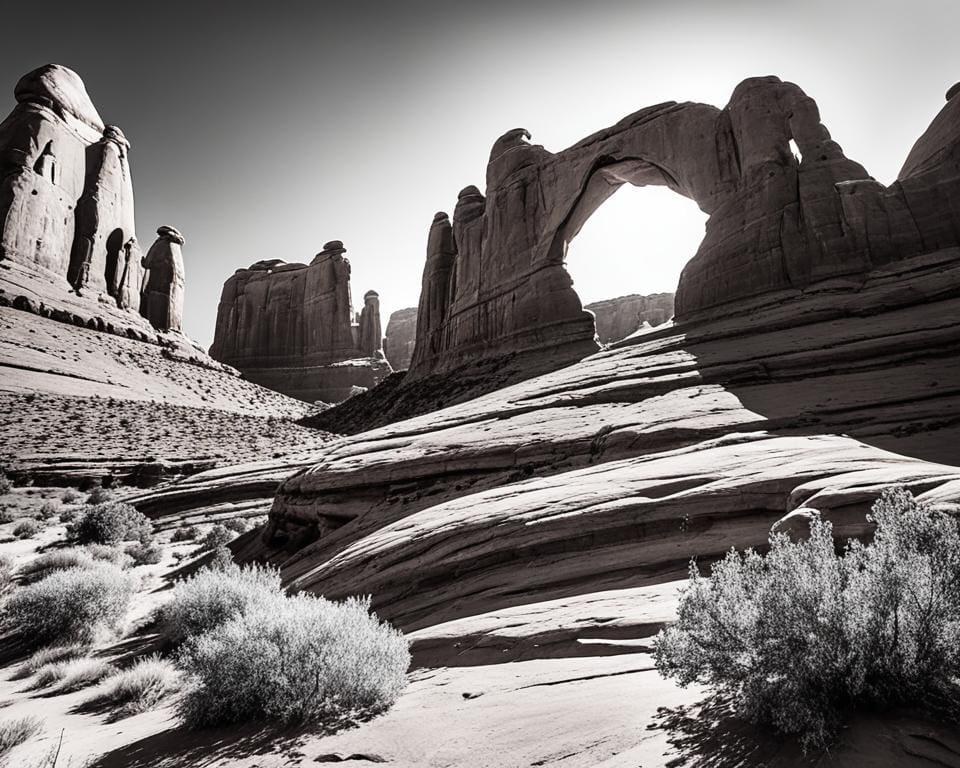Welcome to Arches National Park. This amazing park shows off Utah’s natural rock wonders. It grabs visitors with stunning views and important geological features. Located near Moab, it covers 76,680 acres. Here, you find over 2,000 natural arches. This is the most in the world. The park started as a monument in 1929 and became a national park in 1971. Arches is now one of the top National Parks in Utah. In 2022, it welcomed nearly 1.5 million visitors.
The park features cliffs and arches made mainly of Entrada and Navajo sandstone. These rocks formed in the Jurassic Period. When people explore the park, they see a land shaped by erosion. This makes the park one of the top Geological Wonders today. Let’s discover the history and geology behind Arches National Park’s famous rock formations.
Understanding the Geological History of Arches National Park
The story of Arches National Park spans millions of years. It began as ancient seabeds and transformed into amazing rock formations. By exploring the rock layers, we discover the park’s fascinating history.
The Age and Formation of Rock Layers
Arches National Park’s rock layers date back about 300 million years. It all started with the Pennsylvanian Paradox Formation. The oldest is the Navajo Sandstone, created from ancient dunes.
Other layers like the Dewey Bridge Member and the Entrada Sandstone have unique features. These are vital for the arches we see today. Over time, layers shaped by tectonic movements and erosion created natural wonders.
The park’s arches result from natural forces. Rock beneath erodes, leaving the stronger layers to form arches. This process creates Arches National Park’s iconic landscapes.
Significant Geological Events
Several important geological events shaped Arches National Park. Supercontinents collided about million years ago, causing sediments to deposit. These events created the park’s remarkable structures, like Delicate Arch.
Arches National Park is unique due to its vast sandstone arches. Visitors witness the earth’s shifting geological history. The park’s beauty showcases these changes, making it a must-see.

Arches National Park: Utah’s Natural Rock Formations
Visiting Arches National Park is an unforgettable journey. It shows the stunning beauty and complex processes of its landscapes. The park has over 2,000 natural arches, the most in the world. The formation of these arches is complex, mainly caused by erosion. This happens through water getting in and freeze-thaw cycles, making the beautiful structures we see.
The Formation Process of Natural Arches
Arches National Park is famous for its natural arches. They vary from thin cracks to spans bigger than 300 feet. These structures are mainly found in the Entrada Sandstone. This type of rock lets water seep in, causing erosion and creating cracks. These cracks become larger openings called ‘fins.’ The area’s low yearly rain, 8-10 inches, helps this erosion process. Water pools, seeps into the sandstone, dissolves calcite, and widens the cracks. Freezing and thawing break down the rock even more. This shows nature’s incredible power.
Types of Rock Formations Present
Arches National Park is home to more than just arches. Visitors can see fins, spires, and balanced rocks. Famous structures like Delicate Arch, Landscape Arch, and Balanced Rock stir the imagination. They each tell a story of geological history with their shapes and materials. The Entrada Sandstone, with its erosion patterns, shows the ongoing effects of nature over time. These natural wonders highlight the need to preserve these features. They also encourage outdoor adventures in Utah, connecting people with landscapes formed over millions of years.









